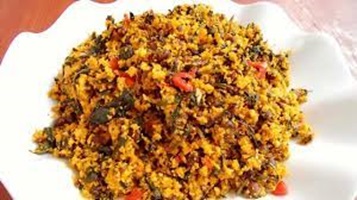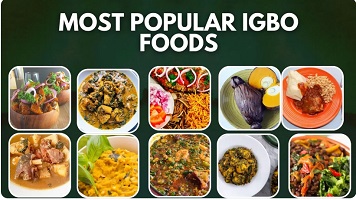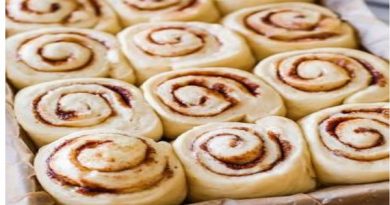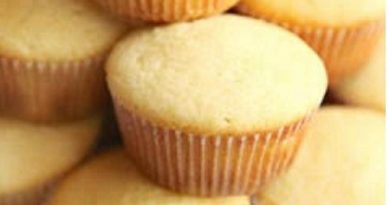Ayaraya Oka Recipe (Otipiri | Maize Vegetable)
Ayaraya Oka Recipe (Otipiri | Maize Vegetable)
- How to Make My local food delicacy (ayaraya oka)
- Have you eaten Ayaraya Oka or Otipio before?

The Ayaraya oka is a highly nutritious delicacy that is rich in protein and fiber. Ayaraya Oka is a Nsukka native food and also one of the native Igbo foods that is special among the people of Udi from Enugu State and other southeast states of Nigeria
Where is Ayaraya Oka from?
Ayaraya oka, also called Otipio, is a native Igbo food made mostly by the Nsukka and Udi people of Enugu State in south-eastern Nigeria. Other Southeast states of Nigeria also enjoy this nutritious delicacy.
It is made from a blend of local beans called Agbugbu (fio-fio) with slightly ground maize (Zea mays) and vegetables.
Agbugbu is an important source of protein in both urban and rural Nigeria.
Normally, Ayaraya Oka or Otipiri is made from a rough blend of maize, pigeon pea (Agbugbu local beans), fermented oil bean seed locally called Ugba, palm oil, onion, vegetables, and salt.
Different kinds of Otipiri/Ayaraya recipe
Ayaraya are prepared in three ways:
- Ayaraya Ji,
- Ayaraya Oka and
- Ayaraya Ede
While Ayaraya Ji and Ayaraya Oka are more common, Ayaraya Ji is made from yam, pigeon pea, fermented African oil bean seed, palm oil, salt, pepper, and onions.
Ayaraya Oka is made from a blend of pigeon peas, maize, vegetables, fermented African oil bean seed (Ugba), onions, and red palm oil.
Agbugbu, also called pigeon pea or fio-fio, is a good source of protein; it has fiber, potassium, and iron and is low in calories and fat.
Nutritional Value of Pigeon Peas (Agbugbu, Fio-Fio)
Pigeon peas are good sources of protein, fiber, and other vitamins and minerals like magnesium, thiamine, phosphorus, copper, manganese, and potassium.
They have low-fat content. They also contain antioxidants that protect the body against free radicals.
One cup (168 grams) of cooked pigeon peas contains:
- Energy: 850 kilojoules (203 calories)
- Protein: 11 grams (g)
- Fat: 0.6 g
- Carbs: 39 g
- Fiber: 11 g
- Potassium: 645 milligrams (mg)
- Calcium: 7% of Daily Value (DV)
- Magnesium: 22% of DV
- Iron: 22% of DV
- Zinc: 14% of DV
- Phosphorus: 28% of DV
- Manganese: 34% of DV
- Selenium: 8% of DV
- Copper: 50% of DV
- Folate: 46% of DV
- Riboflavin: 6% of DV
- Thiamin: 22% of DV
Pigeon peas also contain important amino acids like lysine, tryptophan, and methionine
Homemade Otipiri recipe
This homemade otipiri recipe is a tasty dish when properly cooked. Though demanding and time-consuming, you will love this food. Otipiri food is a healthy diet that can be eaten even among diabetic patients, and it will not increase their blood sugar level.
How to make Ayaraya Oka Recipe—Otipiri Recipe
Ayaraya Oka Ingredients
- Maize: Oka/corn-soaked overnight (Rough blend)
- Beans: -Agbugbu (Local beans/fio fio, dry Pigeon peas)
- Vegetables (Spinach and Scent leaf)
- Anyara leaf and Seed (or Bitter leaf)
Fresh Akidi(Optional)- Ugba-Ukpaka (African oil bean)
Seasoning cube(optional)- palm oil
- Pepper
- Onion
- Salt to taste
Preparation of Ayaraya Oka
- Firstly, pre-soak your oka, corn, or maize overnight, then rinse the next day, roughly grind, and set aside.
- Secondly, pick out the dirt from the Fio Fio, pigeon peas, local beans, or Agbugbu, wash, place in a clean pot, and cook till it softens. Likewise, you can soak overnight and cook the next day, thereby saving cooking time.
Please Note: Method 1 While the bean is on heat, pour the ground corn into a nylon bag and ensure you double the nylon. Put it inside the boiling beans so both cook together; do it in a way such that water will not enter into the corn.
Method 2: When the Agbugbu or bean is almost done, reduce the excess water from the beans to be of the same level. Then add your already-washed bitter leaves over the beans to cover them properly. Afterward, in a basket or iron sieve, pour the ground maize and place it over the bitter leaf. Allow to cook for like 1 hour or more.
- Thirdly, the maize needs steam to cook, not necessarily water; when the ground corn is done, check the fiofio also.
- Fourthly, Wash and slice the scent leaf and set aside the anyara leaf; wash and slice the onion, grate the fresh pepper.
- Lastly, in a clean pot, heat the palm oil, stir in the onions, and stir fry for some minutes. Add pepper, Ugba/Ukpaka (oil bean), and crayfish. Stir fry for a few minutes and add a little quantity of water; cover the lid and allow to boil for 3-5 minutes.
Now, add the maize and stir properly, then add the fiofio, scent leaf, and anyara leaf mix to combine very well; taste for salt, and adjust the seasoning. Cover and heat for 3 minutes.
Your authentic Otipiri, Ayaraya Oka, or Mainze vegetable recipe is ready.
Serve hot and enjoy!

Q&As
Ayaraya oka in English
The corn-based dish had two variations: ‘ayaraya oka’ (coarsely ground, soaked, steamed corn) with pigeon peas and ‘ayaraya oka’ with fresh ‘akidi
Ayaraya oka benefits ~ 10 Amazing Health Benefits of Pigeon Peas (Fio-Fio) to the Body
Legumes, such as pigeon peas, are very good for you. They are high in nutrients and provide a healthy energy boost without causing weight gain or accumulating fat.
Pigeon peas are a great addition to any diet because of their many health advantages.
- Diabetes
Because pigeon peas have a low glycemic index, diabetics can safely eat them.
Studies reveal that pigeon pea extract lowers the blood glucose levels of diabetic rats while fasting.
- Lowers Blood Pressure
Potassium, which is found in pigeon peas, aids in blood vessel relaxation and blood pressure reduction. It is a vasodilator, meaning that it lessens blood vessel constriction.
- Growth
Eleven grams of protein are included in one cup of cooked pigeon peas. The body needs protein for growth and development. Cells, tissues, bones, and muscles are made of protein.
- Anaemia
Pigeon peas are good for your health since they can help prevent anemia. Anemia is a disorder in which there are insufficient healthy red blood cells in the blood.
Iron from pigeon peas aids in the body’s production of healthy red blood cells and hemoglobin.
- Losing weight
Pork peas aid with weight loss, just like Fonio does. They have fiber, which instantly increases fullness and reduces hunger.
In addition, pigeon peas have a higher metabolism, low-fat content, and low cholesterol.
Anti-inflammatory Properties
In the body, pigeon peas also have anti-inflammatory qualities.
Pigeon peas include some chemical compounds that aid in lowering the body’s edema and inflammation. Hemorrhoids have also been treated traditionally with a paste derived from mashed pigeon peas.
Culinary Uses
Because of their mild flavor, pigeon peas can easily be included in a variety of recipes. Pigeon peas are used by the Igbo people to make Achicha (Pigeon peas and dried cocoyam), Agbugbu (Pigeon peas and yam), and Ayaraya Oka (Pigeon peas and corn).
Pigeon peas are used to make dhal in India. They are used to make tempeh or tofu, in Asia. In Southeast Asia and the Pacific, sayor, spicy soups, and other side dishes use fresh pods, young shoots, and the seeds of pigeon peas as vegetables.
Cans and frozen seeds are used throughout Central America. It is thought to be the primary traditional dish in Puerto Rico when combined with rice. In Ethiopia and Indonesia, the leaves and pods are added to food.
Roasting the seeds is another option. Because pigeon peas are high in fiber and gluten-free, they can also be used as a novel and unique component in dishes like noodles, pasta, biscuits, and sausages.
Additional Uses
- It facilitates bowel movements.
- It lessens motion sickness
- Teeth can be cleaned with its leaves.
- Hepatitis can be treated using its leaves.
- Also utilized in the management of UTIs
- Moreover, it treats yellow fever
- Leaves have antimalarial characteristics
- It’s an expeller of worms.
- Contains anticancer qualities
- Guard against stomach ulcers
- It is helpful for those who have sickle cell anemia
- Prevents starvation
- Lessens cramps.
Side Effects
Because pigeon peas contain oligosaccharides—carbohydrates that cannot be digested—some people may experience bloating and discomfort.
By soaking the pigeon peas before boiling them and discarding the water once they’ve cooked, these impacts can be minimized.
Ayaraya oka Wikipedia
The pigeon pea (Cajanus cajan) is a perennial legume from the family Fabaceae native to the Old World
Achicha Igbo Food ~ What is achicha made from?
Ẹchịcha (also Achịcha) is a dish native to the Igbo part of Nigeria comprising mainly dried cocoyam, mgbụmgbụ (Pigeon pea), and palm oil.
It is by tradition eaten in the dry season when fresh vegetables are hard to come by.


